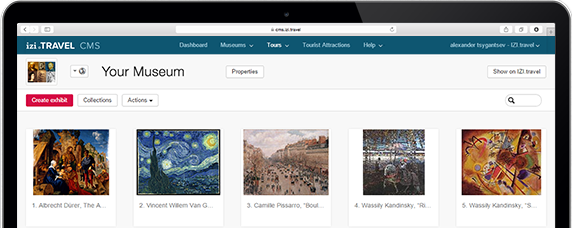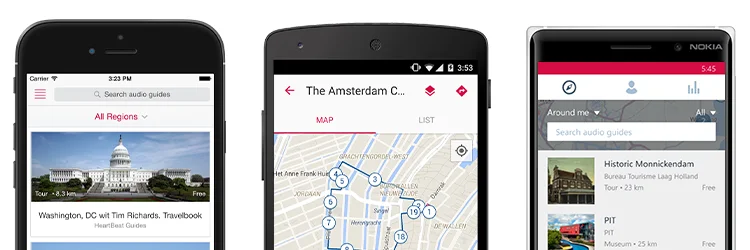Audio tour Valls’ Jewish Quarter guided tour
2 sights
- Audio tour Summary
-
Audio tour Summary
The guided tour round Valls’ Jewish Quarter runs through what it used to be known as the Vilaclosa, which includes the old Medieval Jewish Quarter. The important economic and trade level reached in Valls, as well as the village’s demographic and urbanistic growth, explain the fact that, in the mid-18th century, a new Jewish community arrived in and settled down, becoming one of the most important ones within the Camp de Tarragona area. These communities moved to villages and cities of a certain importance, strategically located and with a sufficient business volume that would allow them to develop a trading and loaning activity. First documents about the existence of a Jewish community in Valls are from 1277. The Aljama, recorded in the 14th century, was the community’s own legal system, which was governed almost autonomously in order to set the social, religious, judicial and economic life of its members. The Jewish community of Valls used to live in the so-called Call (quarter), made of two streets, currently known as Carrer del Call and Carrer dels Jueus, where the Sinagogue was located; both still keep their original Medieval tracing. They had a table in the public butcher’s, their own bread oven and a grave in the village’s outskirts, where dead were buried following the rituals of the Hebrew tradition. Jews in Valls went up to a maximum of 200 people (in an overall population of 3.200 citizens), just before the arrival of the Black Death of 1348. Cohabitation between Jews and Christians was generally peaceful, with no serious disputes worth mentioning. However, in the summer of 1391, a wave of assaults arose in most Jewish Quarters existing in the Iberian Peninsula, driven by a general discomfort caused by the economic crisis of that time. As a result, Valls’ Jewish Quarter was disintegrated and the Jewish community ended up losing most of its members. During the 15th century, some Hebrew families kept living in Valls, but in the end, they would move to Catholicism or leave, as a result of a non-convert Jews decree of expulsion set in 1492.
Francesc Murillo Galimany
- 1 TOURISM OFFICE
- 2 The Jewish communities in Catalonia
- 3 Medieval Valls
- 4 The Jewish community in Valls
- 5 Neighborhood of Valls: houses, inhabitants and shops
- 6 The rabbi
- 7 Kosher Gastronomy
- 8 The tomb of the Jews
- 9 The Old Study
- 10 The public butcher shop
- 11 Relationship between the Jewish community and the Christian population
- 12 Assault in the neighborhood. 1391
-
Audio tour Summary
The guided tour round Valls’ Jewish Quarter runs through what it used to be known as the Vilaclosa, which includes the old Medieval Jewish Quarter. The important economic and trade level reached in Valls, as well as the village’s demographic and urbanistic growth, explain the fact that, in the mid-18th century, a new Jewish community arrived in and settled down, becoming one of the most important ones within the Camp de Tarragona area. These communities moved to villages and cities of a certain importance, strategically located and with a sufficient business volume that would allow them to develop a trading and loaning activity. First documents about the existence of a Jewish community in Valls are from 1277. The Aljama, recorded in the 14th century, was the community’s own legal system, which was governed almost autonomously in order to set the social, religious, judicial and economic life of its members. The Jewish community of Valls used to live in the so-called Call (quarter), made of two streets, currently known as Carrer del Call and Carrer dels Jueus, where the Sinagogue was located; both still keep their original Medieval tracing. They had a table in the public butcher’s, their own bread oven and a grave in the village’s outskirts, where dead were buried following the rituals of the Hebrew tradition. Jews in Valls went up to a maximum of 200 people (in an overall population of 3.200 citizens), just before the arrival of the Black Death of 1348. Cohabitation between Jews and Christians was generally peaceful, with no serious disputes worth mentioning. However, in the summer of 1391, a wave of assaults arose in most Jewish Quarters existing in the Iberian Peninsula, driven by a general discomfort caused by the economic crisis of that time. As a result, Valls’ Jewish Quarter was disintegrated and the Jewish community ended up losing most of its members. During the 15th century, some Hebrew families kept living in Valls, but in the end, they would move to Catholicism or leave, as a result of a non-convert Jews decree of expulsion set in 1492.
Francesc Murillo Galimany
Reviews
2 reviews
Review this tour-
11-10-2020
So pity that there is no audio in this audio tour. Please add it.
-
12-30-2019
al llarg de la ruta vas coneixent costums de la vida dels jueus, contraposats amb els dels cristians.
Download the free izi.TRAVEL app
Create your own audio tours!
Use of the system and the mobile guide app is free


